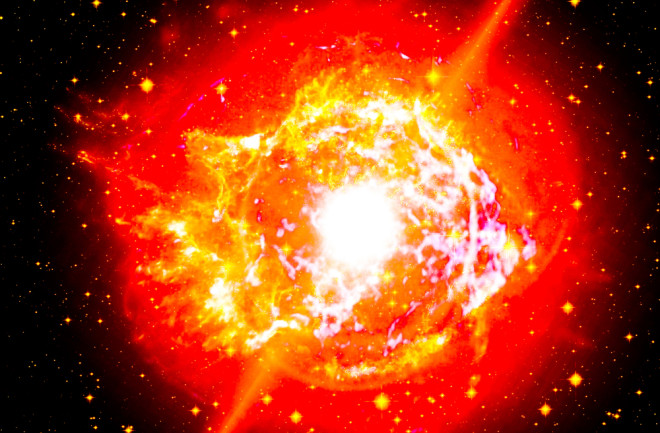When Sir Patrick Moore, the late president of the British Astronomical Association, would step outside on a cold, clear night, he’d look up at the sky and take up his usual vigil.
“I look at Orion before anything else,” he wrote of the constellation, “to make sure that Betelgeuse is still there in its familiar guise!”
Betelgeuse, located on the huntsman’s shoulder, takes its name from an Arabic term that means the “giant’s shoulder,” and the unpredictable supergiant star has always inspired watchfulness. While stars often exude stability for millions of years, this one is notorious for its fits of dimming, brightening, flaring and otherwise puzzling astronomers.
And since Moore died in 2012, things have only gotten worse.
What is Betelgeuse?
Betelgeuse is a massive star, about 700 times the size of the sun. In 2019, a powerful plume rose up from inside it, NASA has hypothesized, and blasted off a chunk of the star’s outer layer.
The ejected material, which weighed several times as much as our moon, cooled out in space, where it blocked light from reaching earth and darkened Moore’s star dramatically in what became known as The Great Dimming. Backyard observers around the world noticed the change, which lasted a few months.
After its dramatic vomiting, Betelgeuse fell into a period of turbulence expected to continue for at least another year or two. Its internal convection cells, which normally drive its characteristic brightening and dimming, are now sloshing around like an unbalanced washing machine, NASA says. On the uppermost level, the scarred surface is bouncing around “like a plate of gelatin dessert.”
The sun has often ejected small amounts of material in a similar fashion, called a coronal mass ejection (CME), but the Betelgeuse belch was 400 billion times larger than the average CME.
Read More: How Old Is the Sun?
When Will Betelgeuse Explode?
In more recent years, the star has traded in its steady, 400-day cycle of glaring and quieting for something much shorter and more spasmodic. Brightening in recent weeks has even raised alarm that the aging star, positioned about 650 light years from Earth, could blast itself apart in a supernova, one of the most violent events in the universe. But scientists have said such an event will probably take another 10,000 to 100,000 years.
When researchers from the Kavli Institute for the Physics and Mathematics of the Universe, in Japan, analyzed Betelgeuse in 2020, they concluded that the star was still early in its helium-burning phase.
"Betelgeuse is not at all close to exploding," a press release said, and what's more, the star "is too far from Earth for the eventual explosion to have significant impact here."
Read More: What Happens When a Star Dies?
Will Betelgeuse Become a Black Hole?
As a massive star, Betelgeuse is expected to go through a dramatic end-of-life catastrophe that will produce either a neutron star or black hole and likely a show for any surviving observers on earth.
Before the catastrophe, Betelgeuse must burn through several different types of nuclear fuel. Starting with hydrogen, which it’s already fused into helium, the fuel for its current stage will make carbon. These reactions release large amounts of energy and send many, many photons out into the universe, including those that reached Moore’s eyes.
Betelgeuse’s next stages will happen quicker as its temperatures rise, sending the star down a slippery slope. Fusion will create oxygen, neon, silicon and finally iron, which accumulates in a huge core.
Read More: This is What a Black Hole Sounds Like
Betelgeuse Star Explosion
Reactions continue, but they sap the star of energy and throw off the balance between expansion and gravitational contraction, causing the star to collapse in on itself and trigger a staggering explosion, a supernova.
As the core collapses, it sends out a shock wave that compresses the surrounding stellar materials, making rare elements such as silver, tin, gold, uranium, mercury and zinc.
The whole process will release 100 times as much energy as our Sun will during its 10-billion-year lifetime and leave behind an exotic remnant, a black hole or neutron star.
Read More: How Big Are Neutron Stars?

